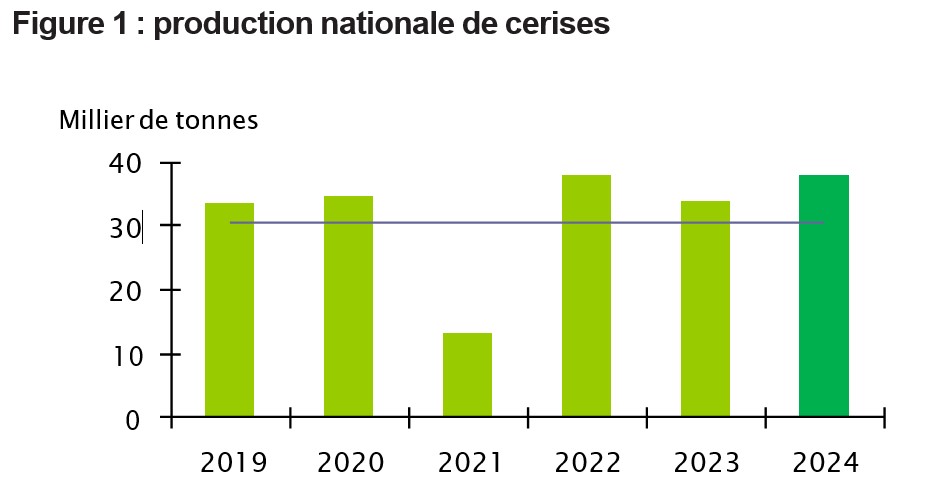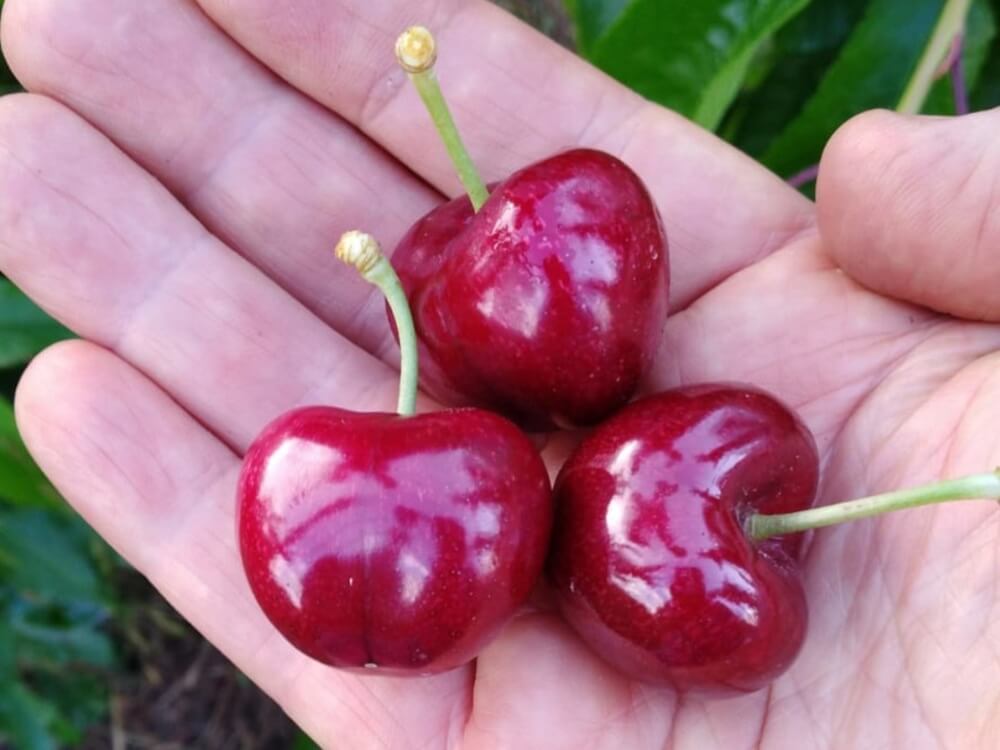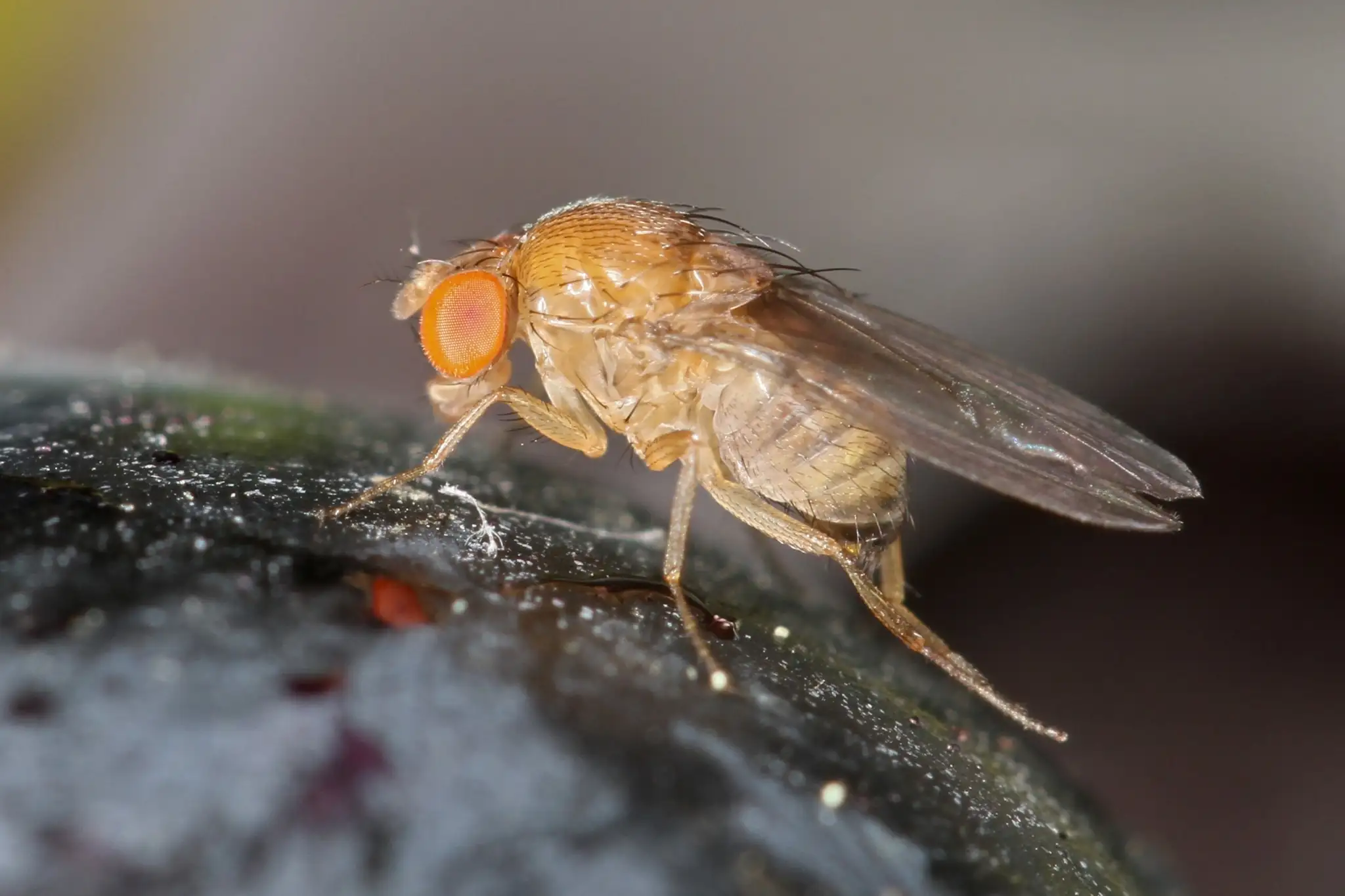As of May 1, 2024, cherry production for the 2024 season was estimated at 37,700 tons, an increase of 12% compared to 2023. All production regions are affected by this increase.
2024 Production Expected to Increase Compared to the Previous Year
As of May 1, cherry production for the 2024 season was estimated at 37,700 tons, an increase of 12% year-on-year and 23% compared to the previous year. 23% higher than the average harvest from 2019 to 2023. As cherries are a particularly fragile fruit, this production forecast may change depending on weather events that occur from now until the end of the harvest.
 Image 1 - French national cherry production from 2019 to 2024.
Image 1 - French national cherry production from 2019 to 2024.
Production Increasing in All Regions, Especially in Occitania
In Occitania, production is expected to be significantly higher than last year (+21%), which was affected by bad weather. So far, the weather in the Garonne Valley and Roussillon has been favorable, with good flowering. In Gard, rain on the flowers had a slightly negative effect on potential. Production area increased by 2% compared to the previous year.
In Auvergne-Rhône-Alpes, the production area decreased by 4% compared to the previous year, due to uprootings caused by health and climate issues in recent years. Flowering went well, and the trees are bearing well. The first cherries (Burlats) should be harvested a week earlier than in 2023.
With no notable climatic contingencies at the moment, and despite the reduction in area, a 10% increase in production is expected compared to the previous year, after a 2023 season also affected by bad weather.
In Provence-Alpes-Côte d'Azur, flowering was abundant, but recent gusts of wind slowed pollination. The vineyard area should decrease slightly, due to the replacement of orchards with other varieties. Production is expected to increase by 10% compared to the previous year, with a few days' advance compared to 2023 levels.
| Estimates as of May 1, 2024 | Occitania | Auvergne - Rhône - Alpes | Provence - Alpes - Côte d'Azur | France |
|---|
| Production Area | Total Area (thousands of hectares) | 1.4 | 2.4 | 2.3 | 7.3 |
| % Change in 1 Year* | 2 | -4 | -1 | -2 |
| % Change in 5 Years* | -1 | -6 | -2 | -3 |
|
| Total Production (thousands of tons) | 7.8 | 11.5 | 13.8 | 37.7 |
| Production | Fresh Cherries | 6.3 | 10.9 | 8.0 | 29.1 |
| Industrial Cherries | 1.5 | 0.6 | 5.8 | 8.6 |
| % Change in 1 Year* | 21 | 10 | 10 | 12 |
| % Change in 5 Years* | 23 | 11 | 40 | 23 |
| * previous year (annual agricultural statistics) * change compared to the average for the period 2019-2023 |
Cherry production forecasts are estimated based on regional samples of quantitative and qualitative observations from multiple sources. They are published assuming that no significant events affecting the final harvest occur during the remainder of the season. The latest forecasts were developed on May 1, based on data collected at the end of April.
The cherry market survey covers 3 regions, representing 81% of the national production in 2023:
- Occitania: 17% of national production in 2023, mainly concentrated in Languedoc, Roussillon, and the Garonne Valley (Tarn et Garonne);
- Provence - Alpes - Côte d'Azur (PACA): 36% of national production in 2023;
- Auvergne - Rhône-Alpes: 28% of national production in 2023, especially in the Rhône Valley.
Not all departments of a surveyed region are necessarily surveyed. Results for the surveyed departments are extrapolated from the previous year's Annual Agricultural Statistics (SAA) data to represent the region as a whole. For unsurveyed regions, extrapolations are also made to estimate the national territory as a whole.
Source: Agreste
Images: Agreste
Cherry Times - All rights reserved











